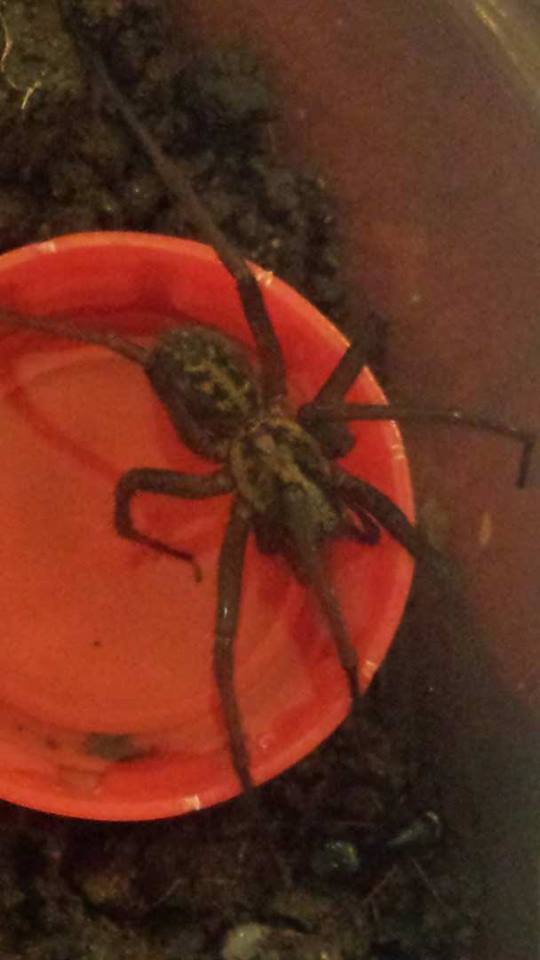arachnophobespiderkeeper
Arachnosquire
- Joined
- Apr 21, 2017
- Messages
- 57
So I made another post, asking for help about an injured "wolf spider" I caught. A nice member of the forum informed me it was not a wolf spider, and likely something else with some suggestions to what it could be. I looked at the suggestions and am quite sure its an Eratigena Atrica, or a giant house spider. They are PRETTY dang giant. Anyways, the current enclosure I have is possibly temporary. it has a little dirt at the bottom, maybe half an inch to an inch, some anchor points for a web, a water source, and a hide. Is this enough? how big should a habitat be for one of these spiders? Do they need burrowing room? I could likely get a large mason jar for them to hide in but if anybody could give any suggestions on somewhat cheap containers to use, what to feed them and how often, thatd be greatly appreciated! keeping spiders has helped my arachnophobia a lot, and I think this lil guy could help me with it!
here is a pic of him by the way, he's by his water source and a dead ant he was likely inspecting. No, I didn't feed it to him. It was just in the dirt when I got it and already dead.

here is a pic of him by the way, he's by his water source and a dead ant he was likely inspecting. No, I didn't feed it to him. It was just in the dirt when I got it and already dead.




